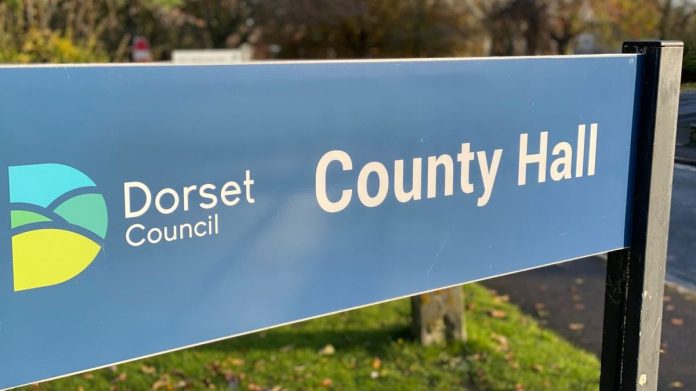With all the spin by the Tories, Labour and Reform UK about increasing local democracy and transferring more powers to the regions, what we see in practice is the opposite. Cuts to funding lead to cuts to services, or in the current parlance, ‘modernisation’.
`As a result, Dorset Council has started consultation with employees on proposals to ‘modernise’ services.
Like many other councils across the country, Dorset Council is facing further financial pressures. With no significant increase in government funding expected in the coming years, the council needs to save money while still delivering around 450 services.
The council has developed a three-year project called ‘Our Future Council’. The aim is to make services easier for residents to access, more efficient, and more affordable to run. The goal is to save £10 million in 2025/26.
Right now, some teams across the council are doing similar jobs using different systems and processes. The new plan will bring these teams together, use technology to speed things up, and reduce paperwork. This means employees will have more time to help the people who need it most.
Most changes will affect how the council handles customer enquiries and internal support services. For example, a new contact system will mean employees see a resident’s past interactions with the council, in one place, while also protecting sensitive information. This will help them give quicker, more joined-up support. More services will also be available online, for those who want to use them.
But the council knows not everyone is able to use the internet. That’s why there will still be help available over the phone and in person, and there is support for people who want to learn digital skills.
Cllr Ben Wilson, Cabinet Member for Corporate Development and Transformation, said:
“We’ve listened to feedback from residents and colleagues to shape these plans. People have told us they want a simpler, joined-up way to contact the council about their services and the plan is to make things easier and more efficient.
“We know change can be difficult. We’re taking a phased approach which means initially, around 500 colleagues will be consulted this year on possible changes to the way they work. Proposals being shared with colleagues this week include a reduction of a limited number of roles in this phase of the programme as part of the wider effort to streamline how we work and reduce costs. The council currently employs more than 4700 people.
“We’re committed to supporting colleagues through this process, with clear support options and the chance to help shape how service will look. We’re doing everything we can to reduce the number of compulsory redundancies, including offering voluntary options and not filling some roles when people leave.”
The first internal changes are expected in October 2025. Over time, services will become easier to access and more joined-up. This means residents will continue to receive the support they need, as we make improvements.
Always look closer:
Here’s a summary table, in British English, of the scale of cuts to local authority funding in England (unless otherwise noted), comparing 2010‑11 with the most recent published figures (up to 2023‑24 or 2024‑25 where available). All values are in real terms and rounded approximately.
| Period | Core central Govt grant funding cut | Core spending power per person* down | Net council spending per person cut (selected services) |
|---|---|---|---|
| 2010‑11 → 2015‑16 | ≈ 35% drop in settlement funding | – | Services like transport/housing/planning fell ~40%+ |
| 2010‑11 → 2019‑20 | – | Spending per person −19% overall | Cultural services −43%, roads −40%, housing −35%, planning −33% |
| 2010‑11 → 2020‑21 | Central‑government funded spending down by over 50% | Total spending power down ~26% | – |
| 2010‑11 → 2023‑24/24‑25 | Core spending power down ~11% by 2024‑25 (vs 2010‑11) | Varied: most deprived councils worst hit (~−26.6%), least deprived ~−7% t | In some places, total expenditure on key services down by ~£7.8 bn/year nationally, ~£150 m/week |
* “Core spending power” combines central government grants and council‑tax raising ability; the “grant funding cut” refers only to central‑government grants (e.g. Revenue Support Grant).
Additional context
- The Local Government Association estimated a cut of nearly 60% in central government funding for councils in England and Wales between 2010 and 2020
- Regional & deprivation-based differences: between 2010 and 2019‑20, the most deprived councils saw a ~35% reduction in core funding per person, compared with only ~15% in the most affluent tenth. Most severe cuts occurred in northern regions and inner London boroughs.
- In London specifically, local authority central government funding fell approx 33% in real terms between 2009‑10 and 2013‑14, early in the austerity cycle.
- Youth services in England plummeted by ~74% real‑terms between 2010‑11 and 2020‑21 (youth service budgets down from £1.48 bn to £379 m).
- By region: Yorkshire councils lost about £945 m in central government funding between 2015‑16 and 2023‑24—a fall from £2.32 bn to £1.37 bn (~40%‑plus).
Interpretation
- Central grant funding has been drastically reduced—by around 35% by mid‑2010s, and up to 50–60% or more over the full decade.
- Total spending power, which includes council‑tax flexibility, is also significantly lower in real terms, around 20–26% lower by early 2020s, and still ~11–18% below 2010‑11 levels in recent years.
- Councils responded by drastically reducing non‑statutory services (libraries, leisure, youth work, community venues) to preserve statutory duties such as social care.
- Variation is stark: deprived areas lost up to 26% of core spending power, whereas affluent areas saw much smaller reductions (~7%)







